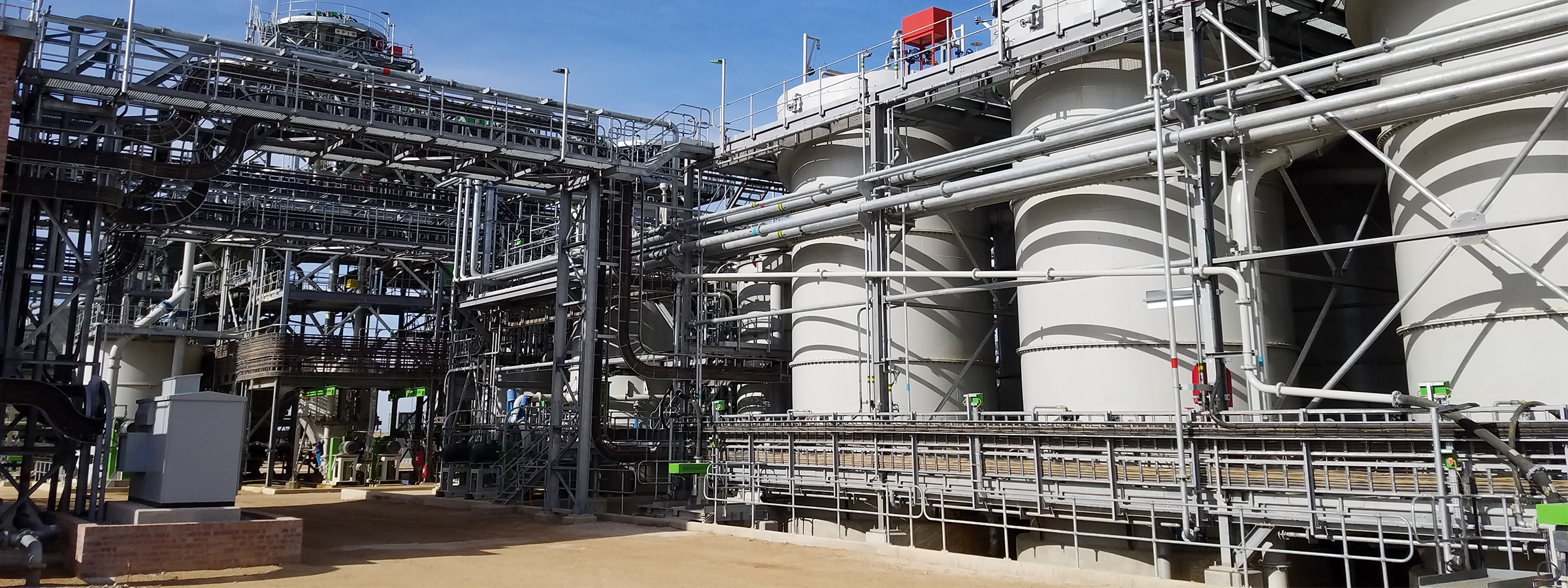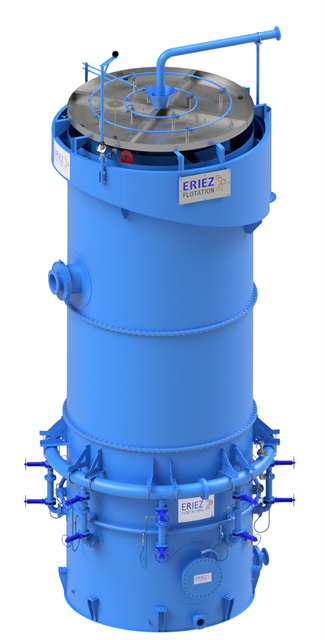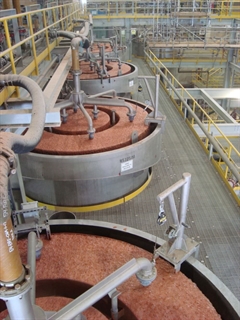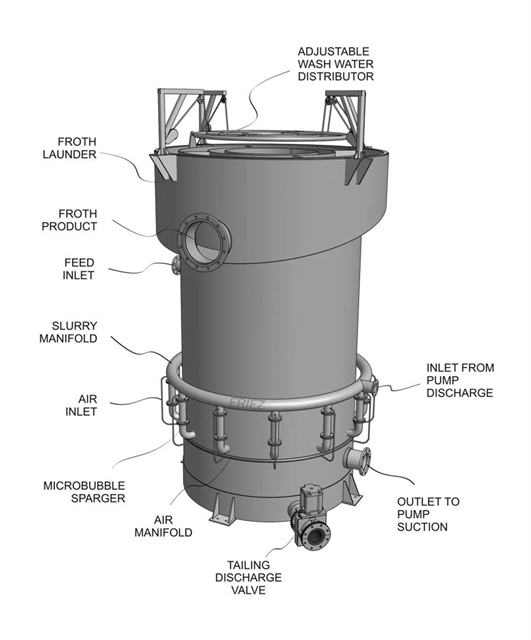
Column Flotation
Eriez Column Flotation
Eriez has supplied more than 1,000 flotation columns throughout the world in mineral concentrating and purification applications that include iron ore, base-metals, gold, industrial minerals, fertilizers (phosphate and potash), energy, and specialty applications such as oil/water separation.
Eriez Flotation's Advantages in Columns include:
- A large group of knowledgeable engineers throughout the world to design and support your application. This includes some with more than 30 years of experience in supplying column applications.
- Offering test-services. We operate a central test lab and test columns that can be brought to site that can be used to predict metallurgical performance and de-risk the installation.
- Provides a variety of column and sparging technologies so we can recommend and design the most appropriate equipment for the application. In some cases, we have optimized columns for particular mineral systems such as the PhosPro™ for phosphate, the K-Pro™ for potash, and the BitPro™ for bitumen.


Basic Idea
Flotation column cells are flotation act as three phase settlers where particles move downwards in a hindered settling environment counter-current to a flux of rising air bubbles that are generated by spargers located near the bottom of the cell. The sparger technology is an important design choice, and allows the user to optimize the performance based on the feed characteristics (size distribution and liberation class). Within the vessel there is a distribution of particle residence times dependent on settling velocity that may impact on the flotation of large particles. Mechanically agitated cells do not suffer from this effect to the same degree but do require high energy input, on the order of 1 kW/m3 to suspend larger particles.
The mechanism of particle/bubble collision in columns is different from intensive mixing devices such as mechanically agitated cells. Under the low-intensity mixing caused only by a rising bubble field, particle drift from the fluid streamlines is caused mainly by gravity and inertial forces and also by interception. In mechanical cells, according to many researchers, bubble-particle collision occurs by their relative movement within turbulent vortices or at their boundaries. Also, as velocities of both bubbles and particles during the attachment are slower under quiescent conditions in a column, the contact time is generally higher. Therefore, probabilities of both collision and adhesion (components of attachment probability) are different than those in the mechanically agitated flotation process.
A column can support a deep froth bed and may use wash water to maintain a downward flow of water (positive bias) evenly across the cross-section of the vessel. This essentially eliminates the entrainment of hydrophilic particles in the float product when the vessel is used for solid/solid separation. This property, along with the absence of stray flows of feed material to the float product from turbulence, means that column devices are normally superior to impeller type machines for the selective separation of fine particles (high grade). The bubbles used in a column are usually generated within the size range that maximizes interfacial surface flux and collection intensity through the vessel. In mechanical cells bubbles are usually generated by the shear action of the impeller; thus, bubble size is dependent on both airflow rate and impeller rotation speed. As such, bubble size cannot be controlled independently of cell turbulence. The height to diameter ratio of a column is significantly higher than mechanical machines. As a result control and consistency of flow is more critical. The column requires much less floor space to operate.
Metallurgical benefits can be derived in a number of ways. In some cases the metallurgical benefits may be obvious. Improved concentrate grades, improved recoveries and reduced reagent consumption are some of the benefits attributed to column cells. In other cases the benefits may be less clear. With some ores, for example, it is possible to recover a portion of the valuable mineral into a high grade concentrate directly at the rougher stage, thereby reducing the size of the subsequent treatment stages. Operating cost savings can be realized from reduced power consumption, reduced maintenance costs and in some cases reduced reagent consumption. Power costs can be 40 - 50% lower than an equivalent mechanical flotation circuit. Using column flotation it is possible to simplify the process by replacing two to three cleaner stages and associated transfer pumps with a single column producing final concentrate.
Reagent savings depend on the nature of the ore being treated and the reagent scheme being utilized. The most significant reductions usually occur with depressants, where it is possible to use wash water to lower impurity levels.
Column cells have very low maintenance requirements and low inventory requirements.

 Downloadable Documents
Downloadable Documents
Column Flotation White Paper - Benchmarking Performance of Eriez Phospro Column Flotation cells against mechanical cells for reverse flotation of a sedimentary phosphate ore.
Improved Cleaner Circuit Performance - Improved Cleaner circuit performance at the degrussa copper mine with an in situ column sparging system.
Knoblauch et al CMP 2016 Copper Cleaner Paper - Improved Cleaner Circuit Performance at The Degrussa Copper Mine with An In Situ Column Sparging System
